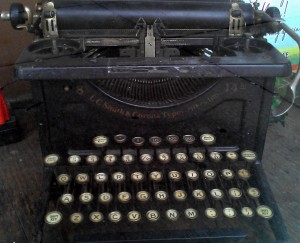 If you were an underpaid and overworked reporter (yeah, that’s redundant), which of these pitches do you suppose would move you to action?
If you were an underpaid and overworked reporter (yeah, that’s redundant), which of these pitches do you suppose would move you to action?
Pitch A:
Joe,
Wondering if you would you be interested in looking into a story suggestion involving the village of Anywheresville and its (mis)handling of a garage construction approval process for a new family in town?
Pitch B:
Joe,
I’m passing along a story suggestion involving the village of Anywheresville and its (mis)handling of a garage construction approval process for a new family in town, the Whoms.
As a child therapist, John Whom knows very well how to communicate with children in a potentially stressful situation. But he and his wife, Amy, are at their wit’s end with Anywheresville officials.
They have spent $50,000 to build a garage, based on plans approved multiple times by the village, only to have officials later say that, oops, they shouldn’t have approved those plans, after all.
Now they want the Whoms to tear it down and start over—a scenario that would cost another $100,000.
Meanwhile, the debacle is costing all of the community’s residents: the village has already spent thousands of dollars in legal, architectural and plan review consultants to fight the Whoms.
A website with much more detail, including video clips of the Whoms, is here. Please let me know if you are interested in learning more; I can put you in touch with them, their attorney and neighbors as well.
*********
If you picked Pitch “A,” then it may be because it took a lot less time to read, and you figure a reporter would appreciate that kind of brevity. However, that brevity comes at the expense of clarity: you’re going to leave the journalist wondering just how much work he or she has to do before even figuring out if this is something worthy of pursuit.
Really, Pitch “A” is a tease, masquerading poorly as a tip. Reporters don’t like being teased. If you have more information that can help them gauge whether to pursue a story idea, then provide it.
Pitch “B” is a bonafide tip that provides a clear blueprint of the story, at least from your client’s perspective. It requires some more up-front work, and some more creative thought, but the payoff is you are much more likely to get the media coverage you seek.
Do some heavy lifting to ease reporters’ load. They’ll appreciate it, and so will your clients who benefit from the consistent coverage you spark by being willing to get into the nitty-gritty of a story and lay out a blueprint they can follow.
P.S. The link above is actually a clip of a talk I gave nearly five years ago on holiday PR tips.
Related Posts:
When a News Outlet Has Been ‘Scooped’: Three Common Responses—& PR Lessons
E-Mail Just One Part of Engaging the Media
